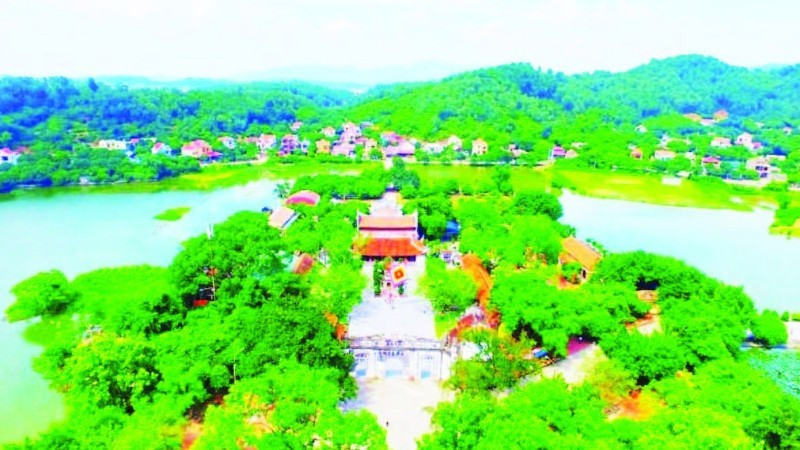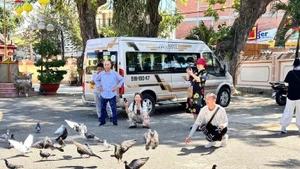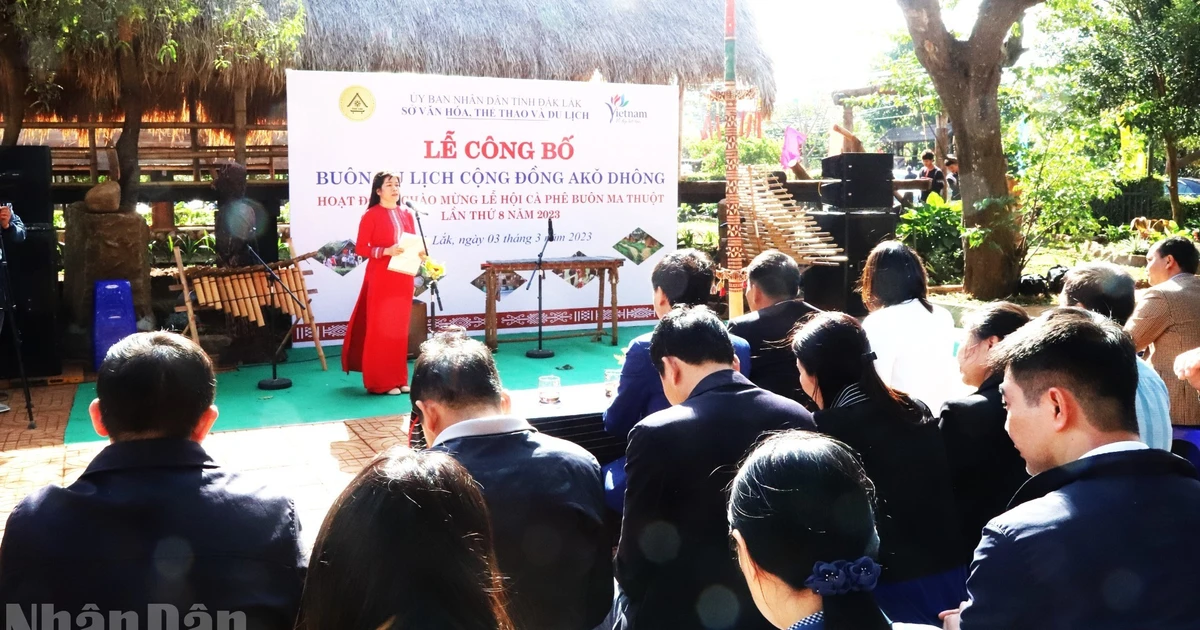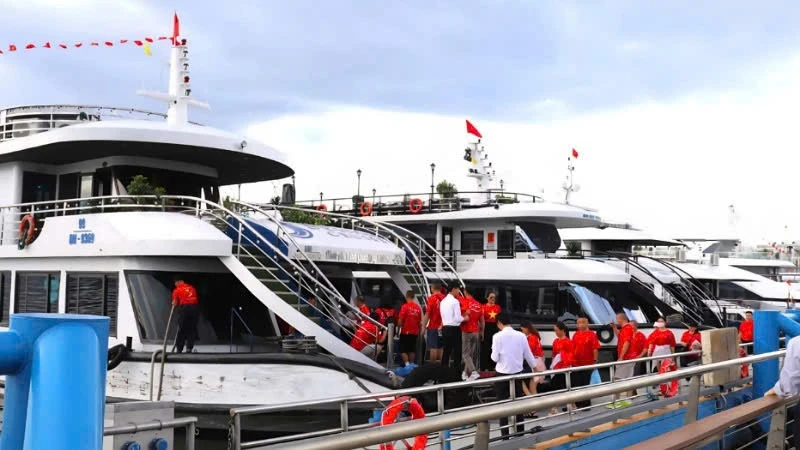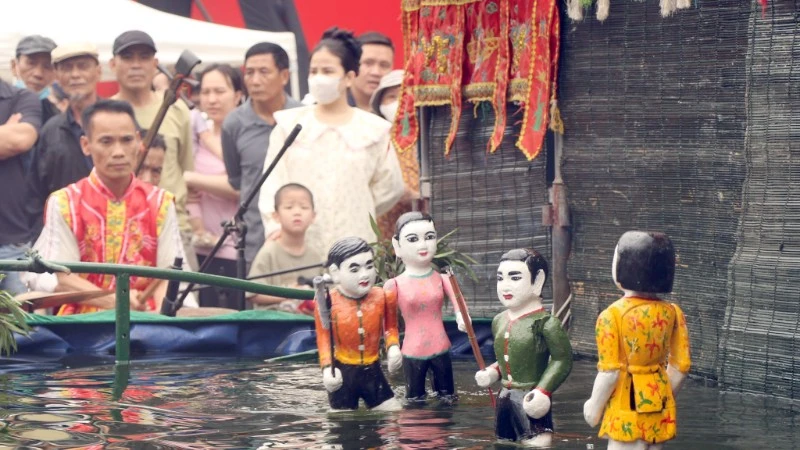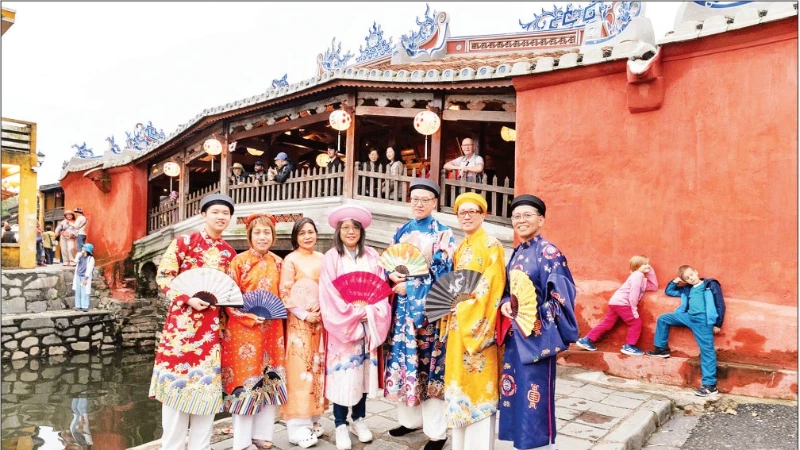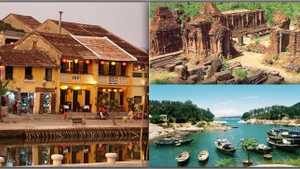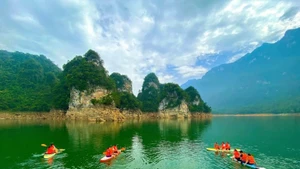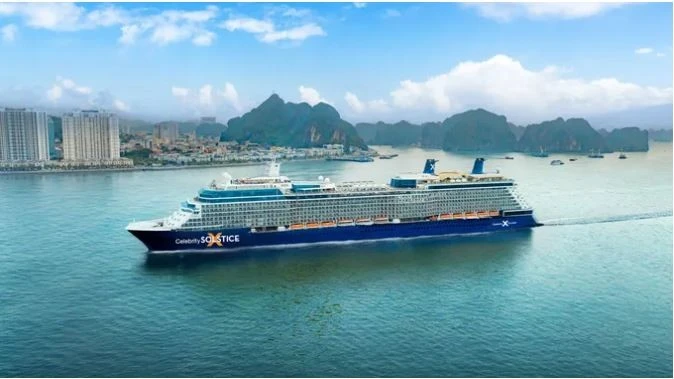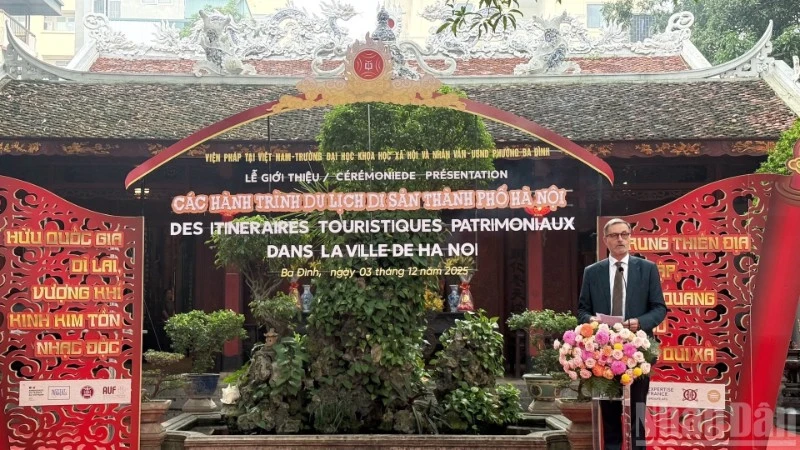This goal is not only intended to drive economic growth and sustainable green tourism but also to spread the image of a civilised, friendly, and liveable port city.
Unique strengths
According to Tran Thi Hoang Mai, Director of Hai Phong’s Department of Culture, Sports and Tourism, Hai Phong today possesses rich and diverse cultural heritage; it is a locality with a long history, cultural traditions, and fine customs. From historic relics bearing the heroic marks of the nation to ancient architectural works, all are priceless assets that shape the city’s distinct identity.
The city has a dense system of tangible and intangible cultural heritage, with 3,981 relics, including two inter-provincial world heritage sites, nine special national relics and clusters of relics, 257 national relics, 722 municipal relics, and 33 national treasures. In addition, Hai Phong is home to two intangible cultural heritages recognised by UNESCO: the Practice of the Belief in the Mother Goddesses of Three Realms (Representative Intangible Cultural Heritage of Humanity) and Ca tru singing (Intangible Cultural Heritage in Need of Urgent Safeguarding). It also has 24 national intangible cultural heritages and 1,289 festivals.
Notably, in Hai Phong, distinctive festivals take place in almost every season of the year. These represent unique resources that enhance the city’s appeal as a destination and gradually drive the development of cultural tourism.
Systematic and concrete action
With the guiding principle of turning relics and heritage into humanistic resources with economic value, the city has approved and adopted specific projects, plans, and programmes to tap into heritage values, such as the Television Stage Project and the “Lights On” Theatre Initiative to stage and host artistic performances at the National Relic Hai Phong Opera House. In the city’s western districts, classified relics have been assigned QR codes, while some localities have built digital databases and maps to promote and share heritage information with residents and visitors.
Various tourist routes and destinations have been formed based on local cultural heritage values, including thematic tours such as Vietnamese figures, Tran dynasty figures, the Truc Lam Zen lineage, the Vietnamese imperial examination road, and craft villages; as well as tours exploring historic, revolutionary, and spiritual sites.
Over the past five years, Hai Phong City and (former) Hai Duong Province have also attracted investment into the construction of numerous five-star hotels, large commercial centres, and other major tourism projects in Cat Ba, Do Son, the city’s western districts, and Vu Yen Eco-Park. These developments have significantly enhanced Hai Phong’s standing on the national and international tourism map.
Since 2021, the city has invested nearly 38 billion VND to restore and embellish 16 national relics and 54 municipal relics; mobilised over 146 billion VND through socialisation; and carried out 181 projects to restore, embellish, and upgrade relics, as well as infrastructure and transport connections to heritage sites, with total investment exceeding 3 trillion VND.
As a result, Hai Phong’s heritage sites and relics are becoming attractive destinations, contributing positively to the growth of services and trade. In the first eight months of 2025 alone, the city welcomed more than 10.8 million tourists, up about 29% year on year, including over 763,000 international visitors, an increase of more than 8.7%.
However, alongside these achievements, the exploitation and promotion of cultural heritage resources remain below potential. Tourism–service infrastructure is still limited; heritage-related tourism products are not yet truly diverse or distinctive; promotional and communication efforts are not broad or strong enough; and the tourism workforce lacks systematic and professional training.
According to Tran Thi Hoang Mai, while building Hai Phong into a regional and international centre for marine, cultural, and heritage tourism has been identified as a strategic breakthrough for the 2025–2030 term, the target of 25 million visitors by 2030 presents no small challenge. The city has set out numerous tasks and solutions to develop marine, heritage, and cultural tourism in tandem with international integration, including transforming Cat Ba into a “green island” and a world-class eco–resort destination; developing Do Son into a multifunctional tourism centre; and turning Con Son–Kiep Bac into an international cultural and spiritual tourism centre.
At the same time, Hai Phong is focusing on improving transport infrastructure to link Cat Ba, Do Son, Con Son, and Kiep Bac as a chain of sea–island–spiritual heritage spaces, tied to the historical and cultural identity of the northern coastal region. The city is also actively studying and proposing policies to encourage more direct air routes connecting Hai Phong with major economic and tourism hubs in Viet Nam and across Asia. It is implementing a wide range of cultural diplomacy activities, boosting external communications, strengthening tourism promotion, and leveraging its unique assets and products — particularly the world heritage sites of Ha Long Bay–Cat Ba Archipelago and Yen Tu–Vinh Nghiem–Con Son–Kiep Bac.
